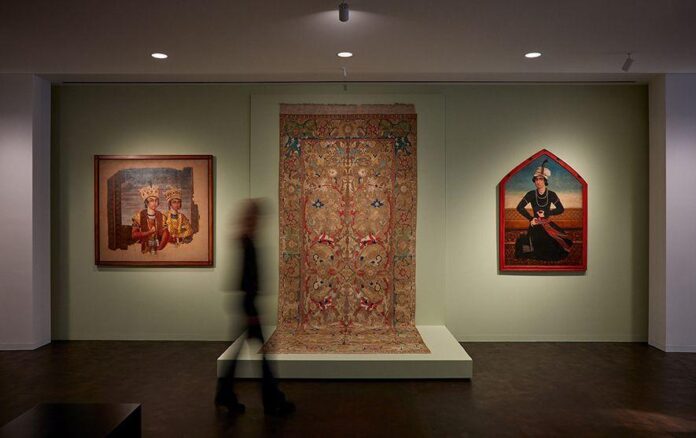Houston is one of the most diverse cities in the US, while Texas has the fifth largest Muslim community of any state in the country. To reflect this culture, the Museum of Fine Arts, Houston (MFAH) recently opened six additional permanent galleries in its Art of the Islamic Worlds wing, which is now filled with hundreds of works donated by the Iranian-born collector Hossein Afshar.
The addition of six new galleries has almost doubled the square footage designated for Islamic art at MFAH. The institution now houses what its director and chair Gary Tinterow describes as “perhaps the most extensive collection of Iranian art in private hands”.
The expansion arrives 15 years after the museum launched its Art of the Islamic Worlds initiative, developed in partnership with local Islamic philanthropists who wanted to see their heritage recognised and celebrated in Houston’s museums.
MFAH’s latest unveiling signals the culmination of a longtime push to establish the museum as a global leader in the preservation, display, research and documentation of Islamic art. Afshar’s loan is the second iteration of this model—in 2012, an agreement was reached between MFAH and the al-Sabah Collection in Kuwait, which loaned hundreds of Islamic objects to the museum, many of which appear in the Islamic Worlds wing with Afshar’s art and the museum’s other holdings.
The galleries now present a vast selection of antiquities spanning from the seventh to the 19th centuries, including manuscripts, ceramics, inlaid metalware and textiles from countries as diverse as Morocco, Spain, Tunisia, Egypt, Turkey, Syria, Iran, Iraq, Uzbekistan, Afghanistan and India.
“The Islamic world is not a monolith,” says Aimée Froom, the museum’s curator of Art of the Islamic Worlds. “We are trying to underscore that Islamic art spans regions as diverse as Eastern Asia to as far west as modern-day Spain.”
Afshar’s donation includes some unique artefacts. “Some blockbuster pieces on view include a 17th-century silk Polonaise carpet made by Persian Safavid weavers that is in fabulous condition as well as two pages from the most important copy of the 16th-century Shahnama manuscript,” Froom says.
Houston has the largest Muslim population in Texas, and, accordingly, the museum’s dedication to Islamic cultural heritage moves beyond the realm of aesthetics. The galleries’ opening coincided with MFAH’s New Beginnings festival, a free event that ushered in the spring with celebratory traditions from across Asia and the Middle East, which took place in the museum’s sculpture garden.
This active approach to inclusivity has paid off. “More than 2,600 people came to the festival, which totally exceeded our expectations,” Froom says. On 2 March, Froom also brought the biennial Historians of Islamic Art Association symposium to MFAH, solidifying the institution’s reputation as a “nexus for the study of Islamic art”, Froom says.
But the museum is not just for people who are interested in Islam. “So many of the arts underlying primordial themes are universal and go beyond any notional boundaries of Islam,” Froom says. “The art is relatable to humanity in general.”

























